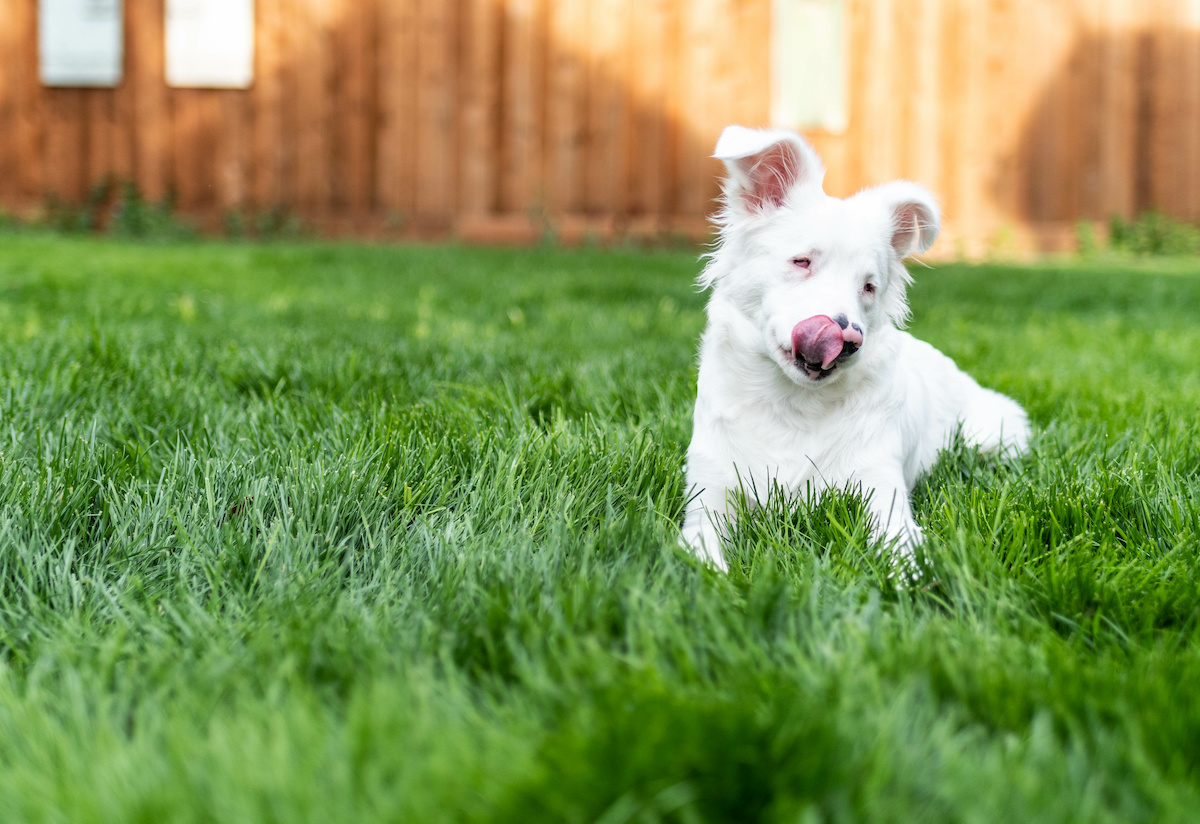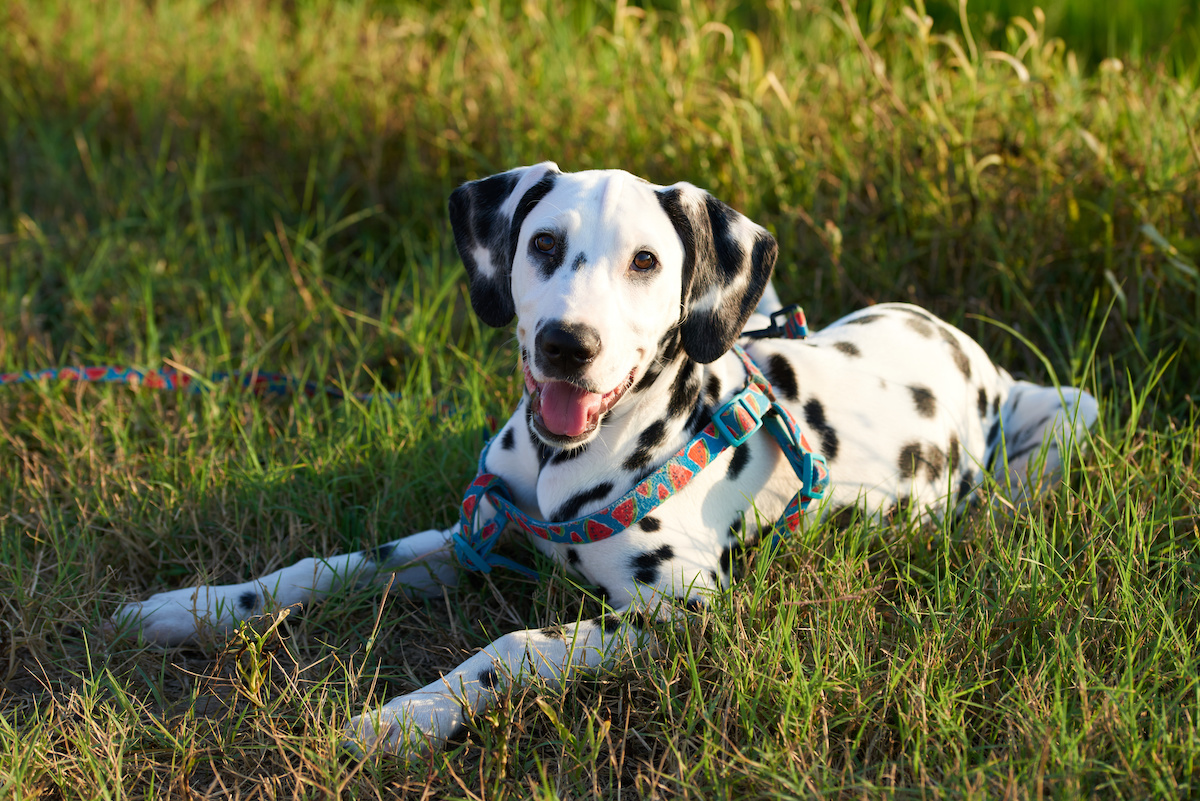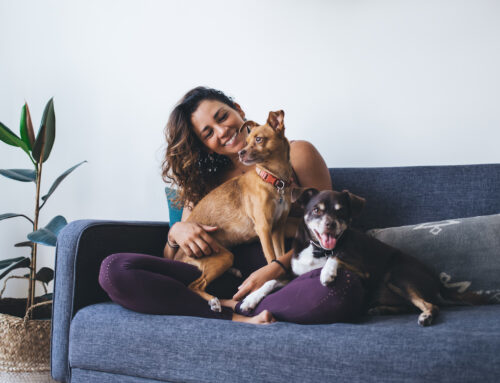Dogs are incredibly intelligent animals that are capable of a wide range of behaviors. Unlike humans, dogs can hear frequencies between 45Hz – 65KHz. Dogs use this heightened sense of hearing to interpret the world around them. Being able to communicate with a deaf dog takes time and patience, but it’s worth the effort. A deaf dog can live a long and happy life when cared for correctly.
Have you recently adopted a deaf dog? Deaf dogs are often adopted by families who want to help rescue and shelter animals, which is wonderful. Many of these dogs can live perfectly happy lives and do not require special attention or extra training. If you’re thinking about adopting a deaf dog, this guide will explain how to care for a deaf dog and the everyday challenges you need to be aware of.
What is Deafness in Dogs?
Deafness in dogs (and any other animal) refers to hearing impairment. While many dog breeds are known to have congenital hearing problems, deafness can also be caused by medical or environmental factors as well. Deafness can affect any dog, regardless of its age or breed. It’s important to note that not all animals suffering from deafness lead equal lives; some adapt well to the condition, while others may struggle.
Do you have a deaf dog? How do you communicate with him? How do you keep him safe?
Create a Safe Space
A deaf dog needs a place where he can get away from the activity of the household and have some peace.
This could be a corner of the family room, a bedroom, or any other designated area. Create a safe comfy spot with a dog bed and some toys that the dog can go to when there is too much chaos in the home.
Show Physical Affection
Just because your dog can’t hear that he’s a “good boy”, doesn’t mean you can’t let him know in other ways. A petting gesture can be used to praise your dog for good behavior. If your dog lies down, and you pat them on the head, this is a sign of approval. Eventually, they’ll figure out that a pat on the head means a good job and will repeat the good behavior more often. Treats, snuggles, and pats are all great ways to let your deaf dog know that you care.
Non-Verbal Communication
Non-verbal communication is the process of understanding and being understood without the use of verbal language. Although this may seem difficult to apply to dogs, it is not as uncommon as we may think. Dogs have the ability to understand non-verbal communication and can communicate this way with their human owners as well.
The best way to help deaf dogs cope with their disability is to learn how to communicate with them. Just because your dog can’t hear doesn’t mean they can’t communicate. Dogs communicate using body language, facial expressions, and the way they position themselves relative to other animals. Pay attention to your dog’s cues so you can understand what they’re trying to say. You can communicate through touch, hand signals, and gestures.
Teach Your Deaf Dog Basic Commands
Assigning hand signals and gestures is the most important step for training your deaf dog. Of course, teaching your dog a command like “sit” or “down” will be easy if they already know the sign for it. Otherwise, a great place to start is by teaching them the non-verbal command for the basic skills you’re trying to teach them. You will need to use these gestures consistently to make this work for both of you.
Some common hand gestures are:
- Come Here – Place your hand palm up, and slightly close your finger to indicate a “come here” gesture
- Sit – Use your index finger to point to the floor
- Stay- Extend the palm of your hand, facing outward, in a “stop” gesture
- Tug- Position your hand palm facing up, close your hand as you pull it toward your body.
If your dog is struggling to learn a new command, try using an object to lead them to the desired behavior. If you want your dog to lie down, for example, you can drag a toy on the ground and then use the petting technique to reward them.

Dealing with Fear and Anxiety in a Deaf Dog
In a perfect world, a deaf dog should have a happy, healthy, and stress-free life. But what if your deaf dog has anxiety, and how do you deal with it?
Dogs can have anxiety just like people and deaf dogs may be more anxious than most, especially if their hearing loss is new.
Sensory deprivation is a well-known cause of canine anxiety. Dogs are highly sensitive animals who rely on their five senses to interact with the world, so the loss of one of these senses can be extremely distressing to your dog.
Deaf dogs rely on their other senses (vision, smell, touch, and hearing) to compensate for their lack of hearing, but these senses don’t give your dog the reward of hearing, which makes the sensory deprivation difficult for the dog to deal with. How can you comfort them?
Pay attention to the triggers that cause anxiety in your deaf dog to better understand your dog’s anxiety and how to best deal with it. For example, if meeting new people seems to stress your dog, avoid taking him to crowded places.
Physical affection such as reassuring pats and snuggles can help to calm your dog. Knowing that you are nearby, even if they can’t hear your voice, should help to ease their anxiety.
What Can’t You Do With a Deaf Dog?
A deaf dog can do anything a hearing dog can do, they just need to interact with you differently. Auditory communication such as clickers, dog whistles, and verbal commands will not work with a dog that can not hear them, but physical gestures, smells, and vibrations can accomplish the same things.
Can I Teach a Deaf Dog to Come When Called?
In short, yes you can teach a deaf dog to come when called. However, there are a few things you must do differently for a deaf dog to learn to respond to your calls. If you are in your dog’s line of sight a simple “come” gesture should do the trick. If your dog is distracted or a great distance away, an E-collar with a vibration setting is a great way to signal for your deaf dog to come to you.
A Deaf Dog’s Care Fundamentals
How do you care for a deaf dog? Essentially it’s the same process as caring for any other dog. Everything you already do for any dog should apply to your deaf dog as well.
- Keep your dog’s nails clipped and their ears cleaned.
- Exercise your dog daily, physically and mentally.
- Don’t leave your dog on a chain.
- Socialize your dog to multiple people, animals, and situations.
- Train your dog with hand signals and gestures
- Feed your dog only premium dog food.
- Keep your dog’s vaccinations up to date.
Is it Difficult to Care for a Deaf Dog?
Although the challenges will be different from those of a hearing dog, caring for a deaf dog should be no more difficult. Deaf dogs have an excellent sense of sight and a much better sense of smell than dogs who can hear.
Deaf dogs are alert, so they should have no problems knowing when there is danger around them.
Dogs are social creatures and greatly rely on their sense of hearing to communicate with other dogs. Due to the absence of hearing, Deaf dogs rely on other ways to connect with other dogs and humans. They are very expressive and you can tell a lot from them. They are truly amazing creatures.
If you need help caring for your deaf dog, we are here to offer support and advice. Please contact us at Animal Care Center to schedule an appointment. Your deaf dog can live a long, healthy, and happy life!






